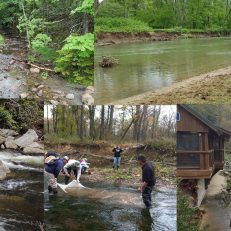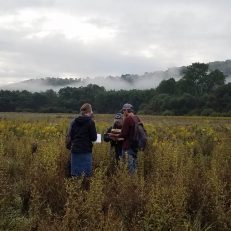Product Description
Learn the key components of conducting a Phase I Environmental Site Assessment (ESA) following the ASTM E1527-21 standard with our comprehensive online course, which offers convenience and flexibility for professional training. In the context of a commercial real estate transaction, understanding the importance of Phase 1 Environmental Site Assessments is critical for evaluating the environmental status of a property before the transaction occurs. Gain expertise in identifying environmental risks, conducting site inspections, and writing professional ESA reports. Ideal for environmental consultants, real estate developers, and anyone involved in property due diligence, this self-paced, on-demand training includes interactive content, case studies, and certification upon completion. Enroll now to enhance your skills in environmental evaluation and property analysis.
The Swamp School Online Phase 1 Environmental Site Assessment course will give students an understanding of how to perform a Phase 1 Environmental Site Assessment following the federal requirements under the ASTM 1527-21 ruling, the All Appropriate Inquiry (AAI) rule, and differences with the Transaction Screen Assessment ASTM – E1528-06 rule.
The project incudes a project assignment that will walk you through a Phase 1 ESA report preparation. At the conclusion of the class the student will have the option to prepare a full Phase 1 report for either a “real” project or a demonstration site.
Elevate your environmental consulting skills with our “Phase I ESA Masterclass.” This online, self-paced course provides in-depth training on conducting Phase I Environmental Site Assessments (ESAs) following the ASTM E1527-21 standard. Learn to identify environmental risks, conduct thorough site inspections, and prepare comprehensive ESA reports. Ideal for professionals in real estate, development, and environmental consulting, this course includes interactive modules, real-world case studies, and certification upon completion. Join now to master the essentials of environmental due diligence.
Course Overview:
Our online Phase I ASTM E1527-21 ESA course provides a thorough examination of the processes involved in conducting a Phase I Environmental Site Assessment. Participants will learn the critical components required to assess potential contaminations and environmental risks associated with a property.
Key Learning Objectives:
- Understand the Scope of ASTM E1527-21: Dive into the key changes and implications of the updated standard, ensuring that you’re up-to-date with current industry practices.
- Identify Recognized Environmental Conditions (RECs): Learn how to identify, describe, and document RECs, as well as other concerns such as controlled recognized environmental conditions (CRECs) and historical recognized environmental conditions (HRECs).
- Review Regulatory Records: Gain expertise in evaluating relevant regulatory databases, historical records, and prior reports to identify potential sources of contamination.
- Conduct Site Inspections: Develop skills in effectively planning and executing site inspections to gather comprehensive evidence for assessments.
- Interview Key Stakeholders: Understand the importance of interviews with property owners, occupants, and local government officials to complete a Phase I ESA.
- Report Writing: Master the components of a professional Phase I ESA report that complies with legal standards and effectively communicates findings to clients and stakeholders.
Course Features:
- Self-Paced Learning: Access the material at your convenience, allowing you to progress through the modules at a pace that suits your schedule.
- Interactive Content: Engage with dynamic multimedia content, including video lectures, interactive scenarios, and real-world case studies that bring the principles of ASTM E1527-21 to life.
- Expert Instruction: Learn from seasoned professionals with extensive experience in conducting Phase I ESAs, providing valuable insights and practical tips.
- Assessment and Certification: Validate your expertise with assessments throughout the course, culminating in a certification upon successful completion that recognizes your understanding of the ASTM E1527-21 standard.
Who Should Enroll:
This course is essential for professionals who wish to conduct or review Phase I Environmental Site Assessments, including but not limited to environmental consultants, property developers, lawyers, environmental engineers, and anyone involved in environmental due diligence processes.
Upon completing this course, you’ll be equipped with the necessary knowledge to conduct Phase I Environmental Site Assessments that meet ASTM E1527-21 standards, an indispensable skill set for professionals committed to thorough environmental due diligence and risk assessment.
Enroll now in our Phase I ASTM E1527-21 Environmental Assessment online class and take the next step towards excellence in environmental evaluation and property analysis.
Course Schedule
| Modules | Topics | |
| Module 1 |
|
|
| Module 2 |
|
|
| Module 3 |
|
|
| Module 4 |
|
Certification
Students that successfully complete the assignments and pass the final exam will be awarded a certificate of training for their records.
Time Limits
The class is expected to take about 12 hours in total study and activity time. It is recommended that this be done over several weeks to allow for student and instructor interactions. The enrolment will remain open to the student for 120 days after purchase.
Introduction to Phase I Environmental Site Assessments
A Phase I Environmental Site Assessment (ESA) is a foundational step in evaluating the environmental condition of a property. This non-intrusive investigation is designed to identify potential environmental risks and liabilities that could impact the property’s value or use. Conducted by experienced environmental professionals, a Phase I ESA involves a meticulous review of historical records, thorough site visits, and detailed interviews with relevant parties. These steps help gather comprehensive information about the property’s past and present uses, ensuring that any potential environmental hazards are identified early in the due diligence process.
Key Components of a Phase I ESA
A comprehensive Phase I ESA includes several critical components:
- Historical Records Review: This involves examining property deeds, permits, and previous environmental reports to gather information about the property’s historical and current uses.
- Site Visit: Conducting a site visit allows for the observation of the property’s conditions, including any visible signs of environmental contamination or hazards.
- Interviews: Engaging with property owners, tenants, and neighbors provides valuable insights into the property’s past and present uses.
- Environmental Databases Review: Reviewing databases such as the EPA’s Superfund database helps identify potential environmental hazards associated with the property.
- Report Preparation: The final step is preparing a detailed report that summarizes the findings of the Phase I ESA and offers recommendations for any necessary further action.
Regulatory Framework and Industry Standards for Environmental Site Assessments
Environmental site assessments are governed by a robust regulatory framework and industry standards to ensure thorough and consistent evaluations. Key regulations include the Comprehensive Environmental Response, Compensation, and Liability Act (CERCLA) and the Small Business Liability Relief and Brownfields Revitalization Act. These laws mandate specific procedures and protections during environmental assessments. Industry standards, such as ASTM E1527-21 for Phase I Environmental Site Assessments and ASTM E1528-22 for Limited Environmental Due Diligence, provide detailed guidelines for conducting these assessments. Additionally, the Environmental Protection Agency (EPA) offers regulations and guidelines that further support the integrity and thoroughness of environmental site assessments. Adhering to these standards and regulations is crucial for conducting effective and legally compliant environmental due diligence.






